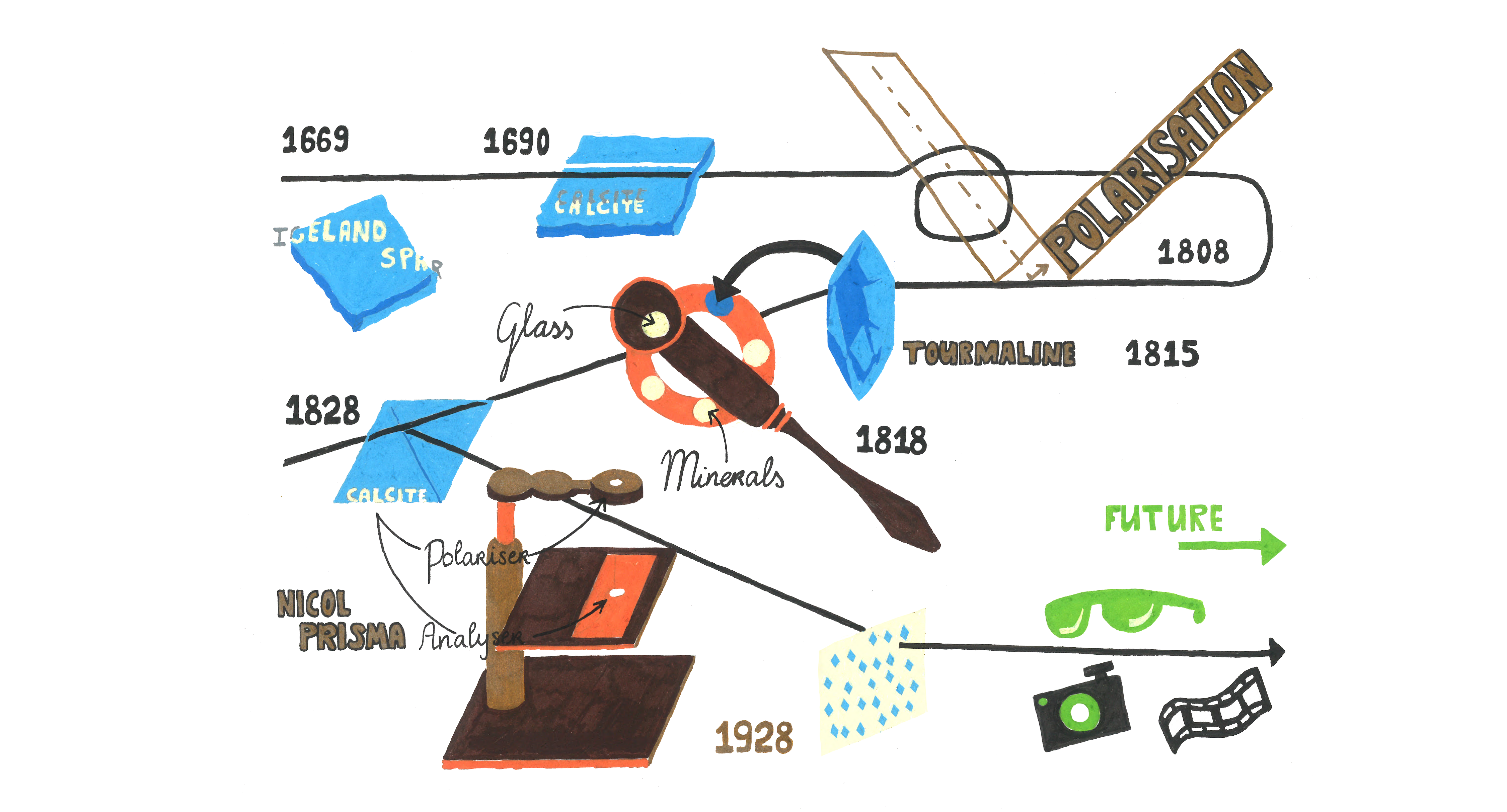Posts from March 2022
Polarisation: From a concoction to global application
Leiden, the Netherlands
We do not know anything for certain, but everything probably
As a scientist, you are so focused on discovering something new that you sometimes forget what preceded to your own research. I noticed this when talking to the editor of het Klokhuis. They were preparing an episode dedicated to Christiaan Huygens, a well-known Dutch astronomer of the 17th century. He was the first to write down his thoughts about the existence of life beyond our Earth in his book Cosmotheoros. If only he had known that his discovery of the polarisation property of light would help us in the quest for extraterrestrial life.
As a Dutch inventor, mathematician, naturalist and astronomer, Huygens was one of the most important scientists of the 17th century. With his "Traite de la Lumiere", his theory of light clashed with the hypothesis of Isaac Newton. Newton described the phenomenon of light as moving small particles with their own mass. Huygens did not agree. He described light as a light wave. In modern physics we describe light by using Huygens theory. We also say that light consists of small particles (photons) that travel at the speed of light. However, these particles do not have mass.
Huygens is an important ancestor of my research. In addition to the philosophical notion of life beyond the earth, he described the refraction of light into two beams by means of a calcite crystal. Both rays that escape from the crystal are linearly polarised. Now you may start to understand why his theories are essential to my research: The search for life on and beyond the earth using the polarisation of light.
Polarisation of light as a known concept
For scientists, it is currently easy to explain the concept of the polarisation of light. Almost everyone uses this invisible property of light on a daily basis. The theory and science is hidden in e.g. polarised sunglasses and LCD screens. Even in the screen of your smartphone you will find an application of polarisation. Then it shouldn't be so tricky to understand... Right?
Well, being a researcher, I can say that it is very difficult to define and explain something that you do not yet understand. For this reason, I would like to dive back into some history of the polarisation of light. How did we progress from discovering the polarisation of light to its applications which I use every single day in my life as an astronomer.

From Huygens' discovery to thin polarising plates • The history of polarisation actually begins with Erasmus Bartholinus. In 1669 he observed the natural phenomenon of double refraction of light in Iceland spar. At that time, however, Bartholinus knew nothing about the phenomenon of polarisation.
Almost twenty years later, Christiaan Huygens discovered the fundamental phenomenon of polarisation in a different material than Bartholinus, namely in calcite. He described the refractive natural phenomenon with his wave theory of light.
It was not until 1808 that Étienne Louis Malus discovered that reflected light becomes partially polarised. His observation provided a better understanding of the propagation of light. Malus was the one who introduced the word "polarisation" for the phenomenon.
A few years later (1815) Jean Baptiste Biot found out that tourmaline passes a polarised ray almost completely without disturbance while absorbing the other ray. David Brewster was the first to utilize this tourmaline as a polarisation analyser (1818). He designed the tourmaline tong that was used to inspect the quality of crystals. The principle of combining a single glass plate and a polariser as an analyser came to be known as the polariscope.
At the beginning of the 20th century there were many types of polariscopes. They all used a Nicol prism as polarisation analyser. A Nicol prism consists of two separately polished calcite prisms that are then glued together. The prism allows waves that vibrate in one direction to pass through it. As a result, it outputs a polarised beam.
In 1928, Edwin H. Land came up with the idea of combining millions of microscopically small herapathite crystals into a thin sheet. This was achieved by finely grinding the crystals and mixing them with a viscous plastic. The mixture was pushed through a thin slit and cooled down. Land called this thin and transparent sheet the Polaroid J-Sheet. Soon the sheets were used on a large scale in e.g. Polaroid sunglasses, car windows with a Polaroid film, filters for cameras and eventually even 3D films.
In the 1940s, the sheets were improved by using plastics consisting of long organic chains called polymers. During production, the sheets are simultaneously heated and stretched. This causes the polymers to lie parallel to each other which results in a strong double-breaking effect. In addition, the sheets became even thinner with this streching technique. Even today, improved versions of these sheets are still in use.
Did you enjoy following the history of Huygens discovery to thin polariser sheets in this way? In my next blog, I will describe a similar storyline, but this time that of the discoveries of the polarisation of light in the field of Astronomy. Stay tuned!
March 31, 2022

